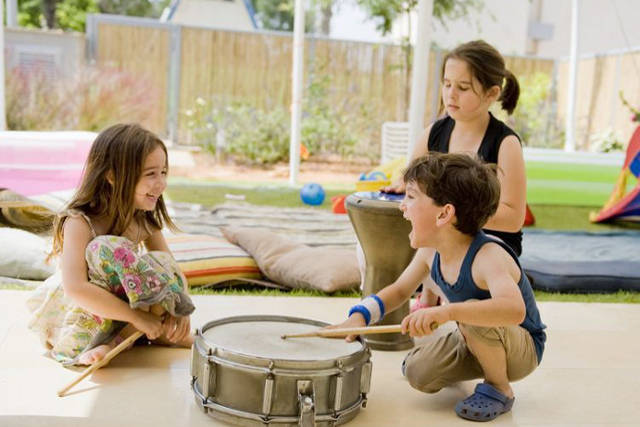OMG! Can u imagine if 2days technology resulted in 2morrow’s gen growing up w/o the skills 2 write or speak properly coz they only know how 2 comms P3r50n 2 P3r50n like diz! That wud b a tragedy! LOL!
Has social media and texting changed the way we speak and write? Will this affect our children when they come to formal writing and speaking?

E-shorthand, cyber slang and chat acronyms are the norm of social media and high-tech gadgets today. Our fingers and thumbs do the talking in ways unimaginable 15 or so years ago. Children who are able to use these gadgets are also getting increasingly younger.
But here’s the thing. As long as schools continue to teach the conventions of writing and speaking and the adults in a young child’s life model good communication skills too, e-shorthand can be a positive addition to a child’s literacy repertoire. It is up to us to ensure that our children are not learning to write on a smartphone.
Short and Sweet
Social media conversations are meant to be quick, easy and familiar; applications are purposefully designed only to allow a certain number of characters. When space is limited, there is little choice but to get creative. A social media conversation today might even simply be a line of pictograms – enter the emoji.
The fact is that short-form writing has been around for a lot longer than we imagine. ‘OMG’ as an acronym for ‘Oh My God!’ first appeared in a letter written by Admiral Lord Fisher to Winston Churchill in 1917. ‘LOL’ has been in use for decades, with various meanings over the years: ‘Lots of love’ and more commonly today ‘Laughing out loud’. Both these terms have evolved into modern mainstream vernacular.

It Can Help Your Child Speak or Write Better
Through exposure to high-tech communication gadgets, our children have the advantage of growing up ‘bilingual’ given the right conditions. A joint study by Coventry University and the University of Tasmania indicates that text messaging does not damage young children’s grasp of the English language, it may actually help improve it.
According to Clare Wood, Professor of Psychology in Education at Coventry University, the reason behind many positive associations between texting slang and spelling outcomes is due to the similar phonetics used in the text abbreviation. Many of such short forms are phonetically based. For example, ‘gr8’ and ‘daful’.
Switching Interchangeably
The ability to code-switch between text speak and more formal language is similar to when a young child who has been immersed in several languages or dialects from the earliest age understands when to use Mandarin and with whom and when to switch to English, for example.
At some level, we have to trust that our children can work out for themselves the purpose of their communications. My son, who is 13 years old, keeps in touch with many friends through short messages on apps like Instagram, yet I never worry that when he speaks to grandma his conversation is going to be a string of abbreviations and acronyms!
The key to ensuring this balance of skills is down to us parents. Problems will arise if we do not expose children to formal literacy models when young. They have to acquire solid communications skills – how to write, and speak, with whole words and in full sentences, for school, face-to-face communication and later for their professional life.
Laying Strong Foundations for Formal Writing Skills

- Provide plenty of opportunities for art and craft, including scribbling – an early form of writing.
- Make sure your child learns how to hold crayons and pencils correctly.
- Help your little one with their writing practice, as they trace the dotted outline of letters. Use different coloured pencils or crayons and practise with them!
- Ensure your child is surrounded by a variety of quality print media; books, newspapers, brochures that expose them to whole language and different scripts.
- Model appropriate communications skills to your child.
- Read with and to your child, using as much expression as possible. Let them hear the colour and depth of whole text.
- Encourage your child to create hand-written thank you and birthday cards/letters for friends and relatives. In this age of real-time communication, it is such a joy to receive an envelope in the post!
- Introduced your child to phonics at a young age.
E-shorthand is a form of language that has a place in the way we communicate today. While it is an advantage for children to grow up linguistically bilingual, that is, to be able to switch comfortably from text-speak or cyber slang to formal written and spoken language, for this to happen successfully there is no substitute for teaching formal writing conventions and most importantly, laying the foundations for strong literacy skills as early as possible.
When we do this, we can view casual social media language as another genre of writing – not wrong or bad – but simply, different. And it is up to us parents and teachers to be role models; to monitor and remind our children that each language form has its rightful place.
By Fiona Walker, Principal of Schools and CEO of Julia Gabriel Education.
This article was first published in The New Age Parents e-magazine.
* * * * *
Like what you see here? Get parenting tips and stories straight to your inbox! Join our mailing list here.
Want to be heard 👂 and seen 👀 by over 100,000 parents in Singapore? We can help! Leave your contact here and we’ll be in touch.

























































